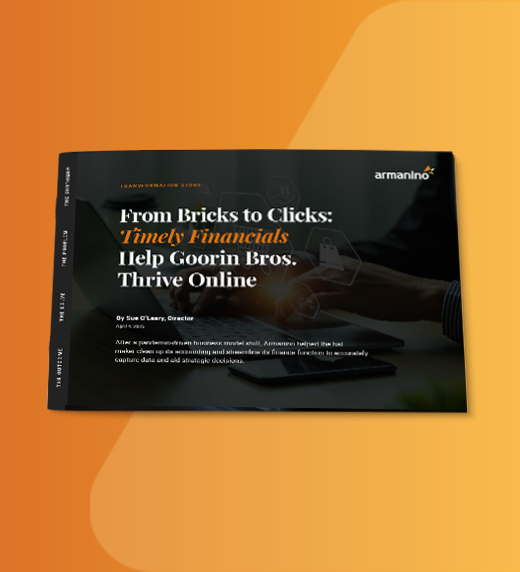
Whether it’s the rapid rise of streaming services or artists selling and protecting their work via non-fungible tokens, creative industry businesses need to understand the potential impact of current trends. Here are five main trends to keep an eye on.
With all the public outcry over privacy violations, racism and sexualization, it is no wonder that people and brands are more protective of their public persona than ever before. Lawsuits brought by student athletes against the National Collegiate Athletic Association (NCAA) have driven changes for publicity and ownership of athletes’ name, image and likeness. Traditionally, the NCAA retained rights to NILs long after student athletes graduated and progressed in their careers. A few states have enacted changes, and the NCAA is pushing for federal legislation.
Additionally, new “right of publicity” laws in New York and California have clarified and restricted NIL usage. One such law in New York has changed the use of NILs for families of deceased celebrities so that a celebrity’s estate can be used to protect the family’s brand and monetize the celebrity’s NIL for as long as the popularity exists.
VaynerMedia CEO Gary Vaynerchuk (aka GaryVee) anticipates that 95% of NFTs will end up worthless, but 5% will be life changing for the owner. It’s no different than art, wine or sports memorabilia. He cautions that these early days of NFTs may be akin to the dotcom bubble’s burst in 2000, with most flopping and causing large losses of capital, but also giving rise to behemoths like eBay and Amazon. Vaynerchuk’s conviction is so strong that he has created two entities in the last year centered around NFTs.
As you might have suspected, NFTs and NILs can work in tandem and allow talent to monetize their likeness, forever. In 2021, Kings of Leon became the first band to release an NFT album. Athletes have created digital NFT trading cards. Think about it: What if NFTs had been around when Jerry Siegel and Joe Shuster created Superman or when Carolyn Davidson created the Nike logo? With the right agreement, they and their estates could have received royalty payments every time the NFT was sold in perpetuity.
It’s not all roses, though, for brands. Many NFTs currently use the Ethereum blockchain cryptocurrency, which takes a large amount of energy to produce due to massive amounts of computer “mining.” This could work against those companies, and their agencies, in future B Corp audits. Lower energy-use blockchain alternatives that use “proof of stake” exist and could address this issue, but it remains a challenge for the time being.
NFTs also don’t address usage rights — just because you own an NFT doesn’t mean you can’t prevent copies being made. You simply own the original, not the rights to the usage.
How will this work with independent contractors? Employers should have agreements in place that protect work product for anything created for the company. (There typically are more loopholes in independent contractor agreements since control is often a factor in whether someone is an employee or contractor.)
Agencies will often pass this work on to clients as “work made for hire.” Brands soon may want an NFT created as proof of ownership. Additionally, there may need to be revisions to contracts with employees, contractors and clients to specifically call out ownership of the digital assets and the rights to NFTs.
This also poses new challenges in the business valuation world. As companies invest in and own NFTs, the marketability and liquidity will need to be measured, which will take specialized expertise. Your accountants will need to know how to treat these investments on your books, and as NFTs are purchased using cryptocurrencies, there are potential tax complications that you may need to navigate.
While celebrities continue to embrace crypto, in many circles it is still looked down on like gambling, alcohol and vaping. Many networks will not run crypto-related ads. Many agencies, including most of the large holding companies, will not accept crypto as payment even though they will gladly take the work. This could be an advantage for the independent who might not be as risk adverse or slow moving. Crypto can be more volatile than other non-cash investments, especially pre-ITO, so it is not for the faint of heart.
Many may be waiting for government regulators to step in. But once that happens, people may move on because the “freedom” or “Wild West” aspect of crypto is a large part of what makes it appealing.
Big brands have tapped into the power of influencer marketing to make a larger impact and gain wider reach with their campaigns. It’s estimated that influencer marketing earnings will be worth $13.8 billion in 2021, up from $8 billion in 2019, according to Influencer Marketing Hub’s 2021 benchmark report. This is driving some big changes in the talent industry.
Influencers are now unionizing under the Screen Actors Guild - American Federation of Television and Radio Artists (SAG-AFTRA), but union membership is limited to individuals who have an LLC or a corporation; no partnerships are allowed. Part of what has driven this change with SAG-AFTRA is that celebrities from various mediums are doing more influencer work, and previously there had been no way for their work to apply toward their pensions or be incorporated into contracts with other SAG-AFTRA work.
Influencers dealing with unions will likely be up against high costs. Unions can set minimum rates, rates for usage, benefits and pensions — all of which drive costs higher. Agencies, and in some cases, brands, have to be SAG-AFTRA members, which has a big initial price tag plus stiff penalties if they violate the rules.
All of this is driving influencer costs higher than in previous years. Hiring an influencer can be just as expensive as hiring key talent, however, other mediums will still remain more expensive overall due to production costs.
SAG-AFTRA did establish some guardrails as to who can join. Influencers must produce original content and must retain ownership of their intellectual property. They must also be contracted directly with the brand, not through a third party. Additionally, there are restrictions against certain types of content that might not receive a PG-13 rating.
Influencer content is also limited to a one-year usage agreement, unless otherwise negotiated and limited to the brand’s own website, YouTube channel and other social media platforms to protect other areas of the union jurisdiction.
The 30-second spot appears to be on the decline as more advertisers are looking for six-second spots and long-form documentary style content.
Major cable providers collectively lost 7 million subscribers (aka “cord cutters”) in 2020 and almost 30 million since 2012. These viewers are moving to streaming services due to the increasingly high average monthly cable TV bill, which is now over $200/month, according to Comparitech. Additionally, viewership ratings are under dispute and engagement metrics are questionable at best, so how long will advertisers continue buying and producing broadcast TV? It’s becoming the radio of today.
The one exception may be live TV, which still is the place to be for 30-second spots. 2021 Super Bowl ad prices were expected to decline, but it turned out they were higher in 2021 than in 2020.
Will the trend toward streaming services continue? Streaming remains the cheaper alternative, but all major services have had one or more price increases in the last year as networks negotiate new deals just as they have done with cable providers.
Also, with every network seemingly coming out with their own paid streaming channel, how long will this remain the less expensive option? Users will need to choose what services to pay for just as they did with cable TV or face potentially higher costs.
We have seen advertisers pulling out of Facebook and Instagram due to scandals involving user data and privacy. Many of these brands are working to achieve a more wholesome image, with some making the effort to earn B Corp status.
As these trends unfold, you will need expertise and specialization in your legal team and your staff, including your back office. Can your current team handle the accounting and tax issues around crypto and NFTs? Does your C-suite have the knowledge to navigate these new waters?
Now is the time to start thinking about these issues. By doing so, you’ll be able to prepare and avoid being caught off guard in the not-so-distant future.
If you have any questions or need assistance, contact our experts.


